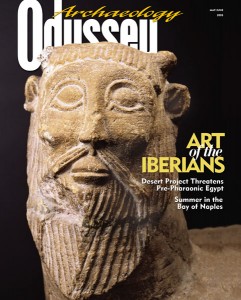Ancient Life: Liquid Gold
A brief history of olive oil


Brandishing long sticks, three men knock olives from a tree and a fourth collects them in a basket in this scene on a sixth-century B.C. Greek black-figure amphora.
In ancient times, harvested olives were drenched in hot water, crushed and pressed. The lighter oil rose to the top of the vat while the water was drawn off through a spout at the bottom.
Olives have been cultivated on Crete since at least the mid-third millennium B.C. The many pithoi (large pottery jars) uncovered in the early second-millennium B.C. palace of Knossos—home of the legendary king Minos—attest to olive oil’s importance during Crete’s Minoan period. The precious commodity was exported to Greece, North Africa and Asia Minor. By the beginning of the first millennium B.C., olive production had spread to the Greek mainland.
The olive tree’s deep roots allow it to survive in dry climates with hot summers, when the fruit develops its oil content. Greece’s coastal regions and river valleys provide excellent conditions for olive production, free from the frosts of higher elevations and more northerly latitudes.
Already a library member? Log in here.
Institution user? Log in with your IP address.

